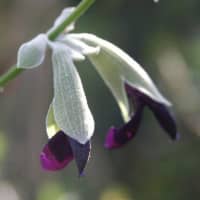Salvia discolor
Composition
- The major component of extracts from aerial parts of the Salvia species is Rosmarinic acid.
- Total phenolic and flavonoid contents may include:
- Rosmarinic acid
- Caffeic acid
- Quercetin
Healing Properties
- Antioxidant: S. discolour extract exhibited strong free radical scavenging ability.[1]
Disease / Symptom Treatment
- Leukemia: Salvia discolor extract showed remarkable cytotoxic effect toward human T-lymphoblast leukemia and adriamycin resistant leukemia.[1:1]
Title: Bioactivity of Three Salvia Species in Relation to Their Total Phenolic and Flavonoid Contents
Author(s): Farukh Sharopov, Abdujabbor Valiev, Mansour Sobeh, Eva Arnold, Michael Winka
Institution(s): Institute of Pharmacy and Molecular Biotechnology Heidelberg University Heidelberg Germany; Department of Pharmaceutical TechnologyAvicenna Tajik State Medical University Dushanbe Tajikistan
Publication: Pharmaceutical Chemistry Journal
Date: 31 October 2018
Abstract: Antioxidant, anti-inflammatory, cytotoxic activities and total phenolic and flavonoid contents of methanol extracts of three Salvia species including Salvia discolor, S. officinalis and S. sclarea were investigated. The compositions of extracts were analyzed by high performance liquid chromatography (HPLC) with a UV-DAD detector. The major component of extracts from aerial parts of Salvia species was rosmarinic acid (0.2 – 61.1%). The composition of methanol extract from aerial parts strongly differed from that of the root extract. The total phenolic and flavonoid contents per 100 g fresh weight ranged within 658.3 – 1805.9 mg of caffeic acid equivalent (CAE) and 13.0 – 184.9 mg of quercetin equivalent (QE), respectively. The highest DPPH• radical scavenging effect was observed for S. sclarea extract (with an IC50 of 21.6 μg/mL), while S. discolour extract exhibited the highest ABTS•+ radical scavenging ability (with IC50 of 53.0 μg/mL) among all extracts. All Salvia extracts showed remarkable cytotoxic effect toward human T-lymphoblast leukemia (CCRF-CEM) and adriamycin resistant leukemia (CEM/ADR 5000) with average IC50 values of 25.3 – 65 μg/mL and 34.5 – 89.8 μg/mL, respectively. A relatively strong effect against human breast adenocarcinoma (MCF-7) was observed for the S. officinalis extract, with an IC50 of 138.5 μg/mL.
Link: Source
Citations: ↩︎ ↩︎
